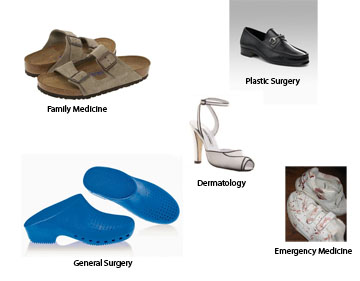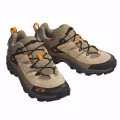April 26th, 2009 by Dr. Val Jones in True Stories
3 Comments »
 A surgeon friend of mine recently told me a story about a little girl who wandered into the territory of some pit bulls. These dogs were tied up with leashes in the neighbor’s back yard – specifically because they couldn’t be trusted to run loose near children. Tragically, the two year old wandered within their grasp after slipping through a protective kiddie gate and out of the house.
A surgeon friend of mine recently told me a story about a little girl who wandered into the territory of some pit bulls. These dogs were tied up with leashes in the neighbor’s back yard – specifically because they couldn’t be trusted to run loose near children. Tragically, the two year old wandered within their grasp after slipping through a protective kiddie gate and out of the house.
The dogs attacked her viciously, dragging her deeper within their territory and attempted to eat her alive. They tore off both her ears and shredded her chest and limbs. By the time she was discovered she was near death. The girl was rushed to the nearest trauma center – where my friend took her to the OR immediately. He spent the entire night putting the pieces back together, as it were.
A couple of days later, my astute friend noticed her having problems turning her head towards her mothers’ spoon during meal times. That observation triggered him to test her vision – and low and behold the girl was completely blind. A brain CT confirmed the clinical team’s worst fears: at some point during her resuscitation, the girl had a massive stroke, and her entire occipital lobe (the back of the brain) was damaged.
Wondering if there was anything he could do to help the girl, and devastated by what he assumed was a grave prognosis (a lifetime of blindness), my friend called a neuro-ophthalmologist for advice. Much to his amazement, the neurologist told him that her visual deficits were likely to resolve completely, because her brain would simply adapt. Children at very young ages can recover from otherwise devastating strokes because of neuroplasticity – the ability of the brain to rewire itself, and recruit healthy neurons to take over for damaged tissue.
True to the neurologist’s predictions, the little girl regained her site within a year. Fortunately, her body healed extremely well too – and despite thousands of stitches, her scarring turned out to be quite minimal. Today it’s hard to tell that she’s had surgery at all.
This story holds special interest to me, as I too was mauled by a dog when I was a little girl. Although I was bitten in the face, and nearly lost my left eye, I can’t remember the last person who noticed my scars or asked about them. They simply faded with time.
The extraordinary healing powers of young tissue cannot be matched in adulthood. However, some degree of neuroplasticity lives on in each of us, offering hope for brain rehabilitation for everyone – from the forgetful to those with major impairments.
Whether you (or a loved one) have internal or external scars – healing is always possible.
April 24th, 2009 by Dr. Val Jones in Humor
No Comments »

I’m currently at a medical conference for my specialty, Physical Medicine and Rehabilitation. I happened to look around at everyone’s shoes and realized that many medical specialties can probably be identified by the types of shoes they wear. Check out the footwear at your next conference and tell me if I’m on to something. And by the way, this is more or less what rehab docs wear on their feet:

April 24th, 2009 by RamonaBatesMD in Better Health Network, Health Tips
3 Comments »
I have a nephew who has excess sweating of his feet which began as a child. The problem has not gone away as he got older, nor has it spread to other parts of his body. He has tried the new socks that say they will absorb sweat and keep the feet dry. None of them work for him. So this post is for him as I look for ways to help him.
Sweating is the release of a salty liquid from the body’s sweat glands. Sweating or perspiration is important in cooling the body. It is common to sweat under the arms, on the feet, and on the palms of the hands.
When the production of sweat is in excess of the amount needed for cooling the body (thermal regulation) it is call hyperhidrosis (excess sweating).
Hyperhidrosis may be primary or secondary. Primary (essential) hyperhidrosis is excess sweating in an otherwise healthy individual, like my nephew.
When excessive sweating affects the hands, feet, and armpits, it’s called primary or focal hyperhidrosis. Primary hyperhidrosis affects 2 – 3% of the population. Less than 40% of patients with this condition seek medical advice. In the majority of primary hyperhidrosis cases, no cause can be found. It appears to run in families.
Secondary hyperhidrosis is associated with any number of systemic illnesses. These including pheochromocytoma, thyrotoxicosis, diabetes mellitus, diabetes insipidus, hypopituitarism, anxiety, menopause, carcinoid syndrome, and drug withdrawal. Nocturnal sweating, in particular, may be a clue to the diagnosis of tuberculosis, lymphoma, endocarditis, diabetes, or acromegaly. Treatment of the underlying disease will decrease or cease the excess sweating in secondary hyperhidrosis.
Several common medications occasionally produce hyperhidrosis. These include tricyclic and serotonin reuptake inhibitors, opioid analgesics, acyclovir, and naproxen.
When looking for underlying health issues, it is important to know if there are any triggers (stress, anxiety, food, etc), if the sweating occurs mostly at night or during the day, which areas of the body are involved, is there an elevated body temperature, or any other problems.
You should see your doctor, if:
-
You sweat a lot or if sweating lasts for a long time or can’t be explained.
-
Sweating occurs with or is followed by chest pain or pressure.
-
Sweating is accompanied by weight loss or most often occurs during sleep and associated with a fever.
Treatments may include:
-
Antiperspirants. Excessive sweating may be controlled with strong anti-perspirants, which plug the sweat ducts. Products containing 10% to 15% aluminum chloride hexahydrate are the first line of treatment for underarm sweating. Antiperspirants can cause skin irritation. The strong doses of aluminum chloride can damage clothing.
-
Medication. Anticholinergics drugs, such as glycopyrrolate (Robinul, Robinul-Forte) are rarely helpful. Beta-blockers or benzodiazepines may help reduce stress-related sweating.
-
Iontophoresis. This FDA-approved procedure uses electricity to temporarily turn off the sweat gland. It is most effective for sweating of the hands and feet. The hands or feet are placed into water, and then a gentle current of electricity is passed through it. The electricity is gradually increased until the patient feels a light tingling sensation. The therapy lasts about 10-20 minutes and requires several sessions. Side effects include skin cracking and blisters, although rare.
-
Botox. Botulinum toxin type A (Botox) was approved by the FDA in 2004 for the treatment of severe underarm sweating, a condition called primary axillary hyperhidrosis. Small doses of purified botulinum toxin injected into the underarm temporarily block the nerves that stimulate sweating. Side effects include injection-site pain and flu-like symptoms.
-
Endoscopic thoracic sympathectomy (ETS). In severe cases, a minimally-invasive surgical procedure called sympathectomy may be recommended. The procedure is usually performed on patients with excessively sweaty palms. It is not as effective on those with excessive armpit sweating. This surgery turns off the signal which tells the body to sweat excessively. ETS surgery is done while the patient is asleep under general anesthesia. The surgery takes about a half hour. Patients usually go home the next day, but may experience pain for about a week. ETS requires special training so make sure your doctor is properly trained. Risks include artery damage, nerve damage, and increased sweating. New sweating occurs in about 50% of patients.
References
Goldman L, Ausiello D. Cecil Textbook of Medicine, 22nd ed. Philadelphia, Pa: WB Saunders; 2004:2365, 2446-2447.
Hyperhidrosis; eMedicine, May 2, 2008; Robert A Schwartz, MD, MPH, Rachel Altman, MD, George Kihiczak, MD
*This blog post was published originally at Suture For A Living.*
March 22nd, 2009 by RamonaBatesMD in Better Health Network
1 Comment »
This isn’t really plastic surgery related, but considering that I am always trying to get patients to get more active or to remain active, then maybe it is. I like to tell my patients that I have the easy part, they have the hard part of maintaining the results. This is especially true for the liposuction or abdominoplasty patients where keeping their weight in line is an issue to outcome in years to come.
There is a new article published in Circulation: Journal of the American Heart Association earlier this week which looked at different types of exercise after a myocardial infarction (MI).
The authors, Dr Margherita Vona et al, did a controlled trial using 209 patients who were referred to cardiac rehabilitation after having an MI. These patients were then randomly assigned to one of four groups: aerobic training, resistance training, both combined, or no exercise.
The researchers looked at flow-mediated dilation (improve blood vessel function) at baseline after 4 weeks of exercise, and then again one month after stopping training. The flow-mediated dilation more than doubled with exercise, from about 4% to about 10% in all three exercise groups. Those in the no exercise group had a small increase from the baseline 4% to about 5%.
The benefits of physical activity did not last when the activity ended. Within a month of no exercise, the flow-mediated function returned to baseline levels.
The important finding of this study is as Dr Vona said, “Long-term adherence to training programs is necessary to maintain vascular benefits on endothelial function.”
Exercise / physical activity has to be like “brushing your teeth”. It needs to be something that you do regularly and not just once or this week, but for life.
It is not important which physical activity you choose to do, it is important that you do it. It is important that you continue to be physically active on a regular basis.
Source
“Effects of different types of exercise training followed by detraining on endothelium-dependent dilation in patients with recent myocardial infarction”; Circulation 2009; DOI: 10.1161/CIRCULATIONAHA.108.821736; Vona M, et al
**This blog post was originally published at Suture For A Living.**
March 12th, 2009 by RamonaBatesMD in Better Health Network
4 Comments »
There is an article (see reference below) in the June 12, 2008 issue of the New England Journal of Medicine (h/t Medpage Today) that shows some amazing regression of hemagiomas using propranolol.
Hemangiomas of infancy are the most common tumor of infancy. They typically appear within a few weeks after birth and peak within three months. Hemagiomas are more common in girls than boys, more common in white than other races, and more common in preemies. Most of these lesions are innocuous and regress without treatment. Up to 75% shrink to insignificance by the time the child reaches school age. However, 5-10% of the lesions that will ulcerate during the rapid growth phase in the first 6 months of life. Ulceration is the most common reason for referral to specialists, and may be associated with pain, bleeding, infection, disfigurement, and scarring.
This one series of photos shows the results:

Panel A shows the patient at 9 weeks of age, before treatment with propranolol, after 4 weeks of receiving systemic corticosteroids (at a dose of 3 mg per kilogram of body weight per day for 2 weeks and at a dose of 5 mg per kilogram per day for 2 weeks).
Panel B shows the patient at 10 weeks of age, 7 days after the initiation of propranolol treatment at a dose of 2 mg per kilogram per day while prednisolone treatment was tapered to 3 mg per kilogram per day. Spontaneous opening of the eye was possible because of a reduction in the size of the subcutaneous component of the hemangioma.
Panel C shows the patient at 6 months of age, while he was still receiving 2 mg of propranolol per kilogram per day. Systemic corticosteroids had been discontinued at 2 months of age. No subcutaneous component of the hemangioma was noted, and the cutaneous component had considerably faded. The child had no visual impairment.
Panel D shows the child at 9 months of age. The hemangioma had continued to improve, and the propranolol treatment was discontinued.
Christine Léauté-Labrèze, M.D., of Bordeaux Children’s Hospital, and colleagues used the drug to treat two infants with heart disease (one with cardiomyopathy, the another with increased cardiac output) who just happened to also have hemangiomas. Unexpectedly, the lesions began to fade. They then used propranolol on nine other children with hemangiomas with similar success.
Johns Hopkins researchers have developed a protocol for the beta-blocker as a first-line treatment for the skin disorder. Propranolol could replace or supplement steroids such as prednisone which are often used currently. The children receive 1 mg/kg of propranolol on the first day, divided over three doses, and 2 mg/kg — also divided in thirds — after that.
Prednisone use carries the side effects of growth retardation, elevated blood sugars, and reduced resistance to infection.
Propranolol has side effects that include hypotension and hypoglycemia, but these are short-lived.
So far, Dr. Cohen and Katherine Puttgen, M.D., also at Johns Hopkins, say they have treated 20 patients with propranolol. Working with cardiologists, they decided to hospitalize the infants for the first two days of treatment to monitor for possible side effects such as hypotension or hypoglycemia. (They have seen none so far.)
Dr. Léauté-Labrèze, and colleagues reported that they are applying for a patent for the use of beta-blockers in infantile capillary hemangiomas.
REFERENCES
Propranolol for severe hemangiomas of infancy; New Engl J Med 2008; 358: 2649-2651; Léauté-Labrèze, C et al
Ulcerated Hemangiomas of Infancy: Risk Factors and Management Strategies; eLiterature Review (John Hopkins Medicine) , Oct 2007, Vol 1, No 4; Bernard A. Cohen, MD, Susan Matra Rabizadeh, MD, MBA, Mark Lebwohl, MD, and Elizabeth Sloand, PhD, CRNP
Related Blog Posts
Vascular Birthmarks (July 15, 2007)
Early Surgical Intervention for Proliferating Hemagiomas of the Scalp — An Article Review (Sept 1, 2008)
**This post was originally published at the Suture For A Living blog**
 A surgeon friend of mine recently told me a story about a little girl who wandered into the territory of some pit bulls. These dogs were tied up with leashes in the neighbor’s back yard – specifically because they couldn’t be trusted to run loose near children. Tragically, the two year old wandered within their grasp after slipping through a protective kiddie gate and out of the house.
A surgeon friend of mine recently told me a story about a little girl who wandered into the territory of some pit bulls. These dogs were tied up with leashes in the neighbor’s back yard – specifically because they couldn’t be trusted to run loose near children. Tragically, the two year old wandered within their grasp after slipping through a protective kiddie gate and out of the house.












